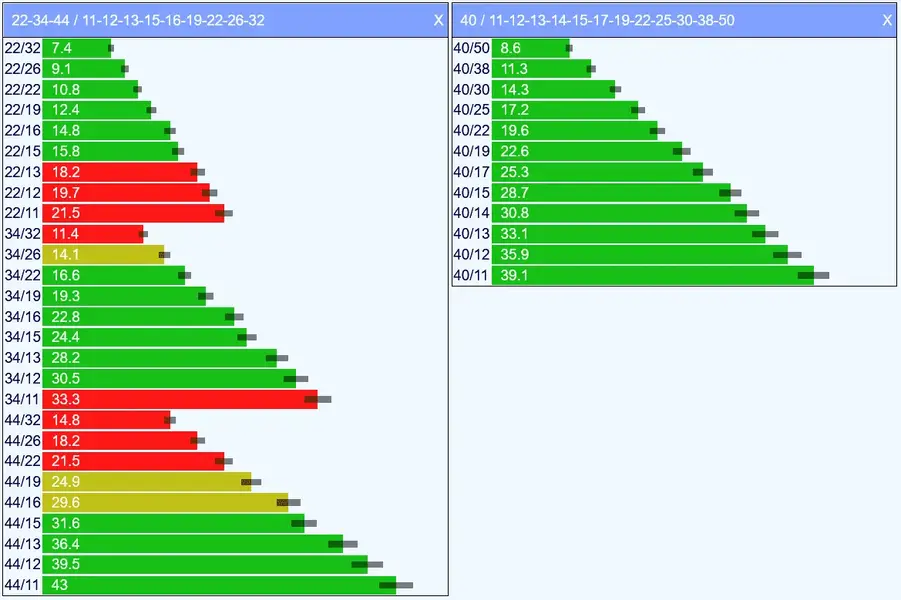joglo
Senior Retro Guru
A triple is a pragmatic way to keep small gaps between gears AND a big range. Otherwise it's either-or.
Interesting discussion, but too me one important aspect hasn't been mentioned at all here.
3xX offers typically still a better range and theoretical small gaps, it's a fact.
But this comes along with the biggest disadvantage for the a set-up with a front mech, the large overlaps.
Just another way to visualize this (there are plenty nice tools like this one BTW):
3x9 vs 1x12 (used same wheel size but have adopted the front chain ring at the 1x12 to have an almost similar low gear)

Red an olive marked gears are overlapping and therefore redundant.
Having that in mind, also a 3xX setup offers only a gear selection of roughly 13-16 gears with a unique ratio.
If you're not constantly also flipping the front mech, just the gaps (or better call it ratio differences) on the small chaing ring are small. Gaps at the middle or big chain ring are similar if not wider than using the 1x12 set-up.
Maths aside, I'm personally a big fan of 1xX, because I'm simply fed-up of those overlaps and also the continuous considerations when to flip the right hand or already the left hand to adopt to chaining elevation conditions.
To me, it's so clearly better to have just one shifter and a constantly increasing or decreasing gear ratio.
Last edited: